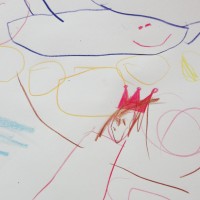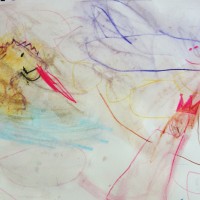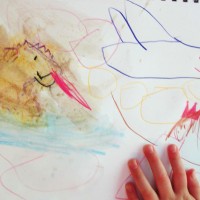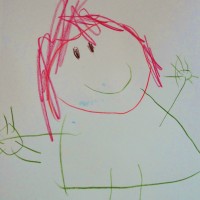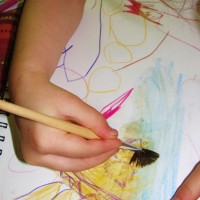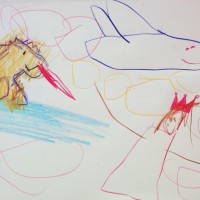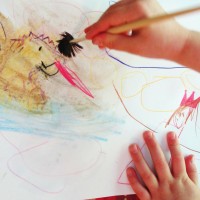
I have been absent from blogging for well over a year, and so after many long, contemplative hikes with my rescue dog Buddy, I decided I needed to share where I’ve been before I move to the next phase of my life as a published author.
In May 2015, my husband lost his job again. Within weeks, he had a slight foot drop, his left foot. Minor, but it gave us both pause. At times his balance seemed off. If Buddy tugged too hard on his leash, he would sometimes pull John to the ground. I took John to our PCP, who sent us to an orthopedic specialist. John’s MRI showed a ruptured disk in his spine, as well as a narrowing of his neck. We were facing extensive spinal and neck surgery, with long recoveries. We had no clue something else was at play.
I insisted on a second opinion, because the first doctor wanted to operate immediately. My gut told me to hold off, and to push for more tests, more opinions, because John presented with another troubling symptom. Fasciculations, brief, spontaneous contractions that affect a small number of muscle fibers, causing flickers of movement under his skin. It was like watching microscopic worms burrow up and down his arms.

We sought out more specialists, prepared for our youngest daughter’s upcoming wedding. But when I watched John trip on a sideway in Boston, unable to catch himself to break his fall, I knew. My family knew, too. They quietly told me they suspected a neurological disease was at play. Beyond the first specialist, no one would operate on John’s neck and/or spine. And yet, John clung to this notion that an operation would cure all, telling me how happy he was going to be once his body was repaired. He would stay up late at night, applying for jobs.
He only fell again, and again, and again.
But with the aide of a walking stick, in mid-September 2015, John managed to walk our daughter down the path to be married. I saw in the eyes of my family that day, their fears that we were dealing with something much larger than what could be fixed on an operating table. And so we all, myself included, decided to not share our concerns with John. We let John have hope, for as long as we could. We let him believe that the next specialist might approve his spine and neck surgery. We hoped that our suspicions were wrong.
On Dec. 8th, 2015, my younger sister and I took John to MGH in Boston, where within hours he was diagnosed with ALS. At the time, I thought it was the worst day of my life, but I didn’t know what lay ahead.
John deteriorated at a rate that no one could predict. Less than 3 months after his diagnosis, he lost the full use of his legs. Shortly after that, he was dependent on others for all self-care, no longer able to slowly lift a spoon to his mouth to feed himself.
Many people know our story, through what I’ve shared on Facebook, etc. The medical community all projected that John would live for 3-5 years. Very quickly, I knew this would not be the case. And so in December 2015, I started a new role as a fierce and loving advocate. It seemed like every few days I was dealing with a new crisis in terms of John’s health. My goal, my daily focus, was to keep him safe, feeling loved, and see that he had quality of life. I checked off what was doable on his wish list. I took him to San Diego to say goodbye to his mother, got him a ride in his favorite car (Austin Healey), and I organized a celebration of John’s life, just in the nick of time.

Less than six months after his ALS diagnosis, my husband was at peace. No longer suffering from his daily muscle spasms that left him screaming in the night.
While I was strong throughout this journey of caring for and watching my husband suffer up to the end, it was the grandchildren that would break me down. Those were the moments where I had to fight to not crumble to the floor. Moments such as when 4 y.o. Landon was begging his dying PopPop to wake up so he could play trains with him.
And so, when it was my turn to speak at John’s memorial this past July, I focused on the children in his life, and on how John inspired us all.

Below is how I closed my tribute to John.
Our 4 y. o. grandson lost his best buddy and fellow train lover. After John died, Landon told everyone PopPop was happy. “He’s a zombie train engineer now, driving dead people around,” Landon insisted. A fan of zombie shows, John would have loved this image.
But then Landon asked about the box. The box with John’s ashes. Which is when Landon noticed that Buddy, our rescue dog, was sad too. In his own 4 y. o. way, Landon tried to soothe the dog’s grief. Lifting one of Buddy’s ears, he whispered, “It’s okay, Buddy. PopPop’s not coming home, Buddy. He lives in a box now.”
The box.
The box always comes up with Landon’s other questions: “Is PopPop just dust now?” “So he can never be PopPop again?”
When Landon’s mother asked him how this made him feel, he said, “I just really miss PopPop is all.”
But here’s the thing, we can all rant about how horrible ALS is or we can look to the good that grew from this experience. We had the opportunity to say goodbye. In addition, John had the opportunity to see how many people love him, how many lives he unknowingly touched. How many lives he is going to touch with his invaluable contribution to ALS research.
John is gone. Yet we are given the chance to be thankful for what we have, that we may take for granted, day after day. We must be sure to use our voices to say what we want to before we lose the ability. And use our legs and arms and minds to accomplish good things and go places we might not otherwise go. We have the opportunity to live our lives to the fullest. What a gift that is.
Every day, I’d ask John what I could do for him. His answer was always the same. “I want to stand up and walk. I want to jump and skip and run.” In late May, he told me he was looking forward to the summer, to root beer floats, to seeing friends and family, to watching cool cars from the second floor balcony.
John wanted to live. He died six days later.
Despite his suffering, John was always grateful. It’s a lesson I don’t take lightly. He would always thank people for changing him, washing him, moving him, feeding him, even when he no longer recognized lifelong friends, his nurses and aides, and even his beloved dog, Buddy.
Grateful. Humble. That was my husband.
So here’s to you, my Brave MacLeod, may you rest in peace.
And in the words of a four year old, I just really miss you is all.
P. S. – A heartfelt thanks to everyone who supported our family throughout this difficult journey.
P. S. S. – I’m okay, John. I hope you are too. xo








